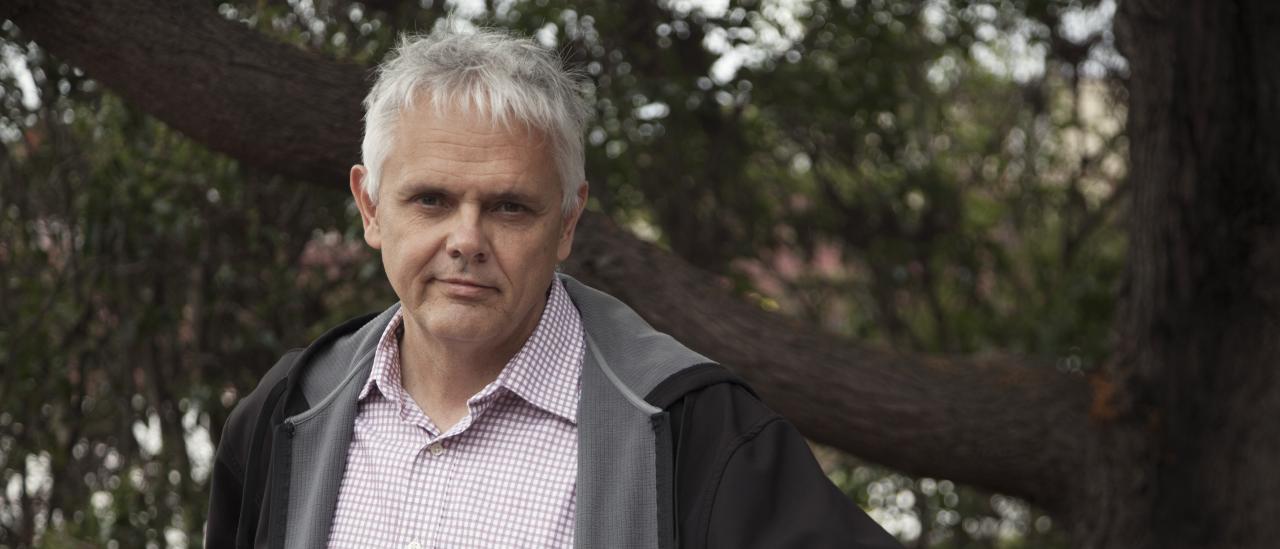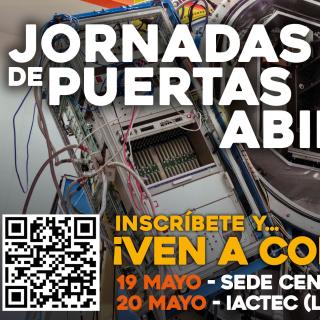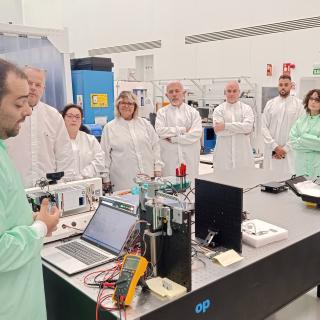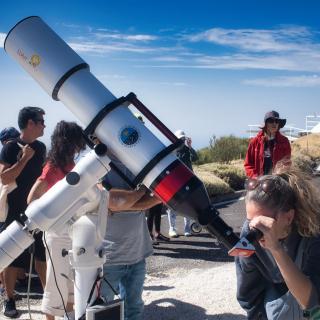During his last visit to the Instituto de Astrofísica de Canarias (IAC) we talked to the Director of the National Solar Observatory (NSO) of the United States about the launching of the Parker Solar Probe, among other subjects. Valentín Martínez Pillet studied for his doctorate at the University of La Laguna and at the IAC, where he is a Coordinator of Projects, but this solar physicist is currently carrying out Special Duties, after accepting, in 2013, the offer to be the director of the institution which is constructing the biggest solar telescope in the world, the Daniel, K. Inouye Solar Telescope (DKIST).
“The Solar Physics which is practiced here is fully competitive with that of the USA, and in many ways it is better”
“We don’t understand why the solar corona is at millions of degrees Kelvin and is hotter than the surface”
“The Parker Solar Probe has a protective shield to protect against the sun’s radiation, which uses materials similar to those used in nuclear reactors"
Question: How did you take the proposal of taking a leap overseas?
Answer: It was five years ago. The process lasted six months. At first I was put on a
short list of five people, then on a list of two, and gradually I saw that I had a good chance. I knew that I was a good candidate, although I wasn’t at all sure that they would offer me the post. I said to myself “I’ll go for it,and see what happens”. I have friends in the USA who encouraged me, and when they finally decided to offer me the job it coincided with a possible offer to be the manager of the National Space Programme in Madrid. At that time I was much more into satellites and space astronomy. I had to decide between being the manager of the National Space Programme for three years, or Director of the National Solar Observatory for five years, which could be extended for a further five. As the National Solar Observatory was at that time building the Daniel K. Inouye Solar Telescope (DKST) in Maui, the scientific opportunity was unequalled so I decided to go to the US.
Q: Because you are a solar physicist, but what is your speciality?
A: I am observational and instrumental. My thesis was observational, in Solar Physics. Afterwards, when I was a postdoc in the US , in the years 1993-1994 I made
contact with instruments, and when I returned in 1995 I began to work on instrumentation, for telescopes on La Palma and Tenerife, as well as doing research.
Q: For which telescopes?
A: For the Swedish Solar Tower (SVST) and for the German Solar Tower (VTT). Afterwards, in the year 2000 I had an opportunity to make instruments for Space. I started with the SUNRISE project, a balloon which we launched from the Arctic Circle, with a telescope of 1m diameter for solar observations, and then in the Solar Orbiter mission, of the European Space Agency (ESA). Just as this period was finishing was when the opportunity arose to apply for the post of Director of the National Solar Observatory, and I took the leap to the USA. But I am a researcher of the Iac. My title is Coordinator of Projects of the IAC. Now I am on Special Duties, which is like long leave.
Q: What are the main problems you have been faced with when running a centre of the level of the National Solar Observatory?
A: The main problema was to understand how Science works in the USA. The budgeting process there is well established. They defined it after the 2nd World War, and they keep it in place, but I had to learn it from scratch. How they pass the budget, how the budget will affect your institution, who are the key people you have to consult about your funding, and how to obtain long term funding and new projects. This was what gave me most problems, but after five years I think I have mastered them. I think that it is a more complex system, more open,and more flexble. I’m not saying that we have to copy it in Spain. All I am saying is that it is different, it seems to me better established, and gives greater opportunities.
Q: What differences do you find between research in the US and in the Canaries?
The Instituto de Astrofísica de Canarias is an absolutely front Rank centre in Astrophysics in general and, without a doubt, in Solar Physics in particular. The Solar Physics here is fully competitive with that in the US, and in many ways it is superior. To the point where one of the reasons why they appointed someone from the Canaries as Director of the NSO was, I’m quite sure, that they saw this as a net positive contribution.
As for Solar Physics, comparing what is being done here at the IAC what is done in the US, they are very similar. We collaborate strongly. There are no major differences. The solar telescopes in the uS and those in the Canaries are also very similar. But when they have the DKIST 4m solar telescope it will give an advantage to the Americans for a long time, until the European Solar Telescope (EST), also a 4m instrument, is installed in the Canaries. They are two similar telescopes, but with certain differences.
Q: How will the DKIST and the EST complement each other?
A: As they are both of 4m diameter they have similar observing capacities, and sensitivity for solar spectroscopy and polarimetry. I think that the most important point is that they are 12 hours apart. One is in Hawaii, and the other will be in the Canaries, so that it will be possible to observer here in the Canaries and then continue with the same observation in Hawaii. If you have two 4m telescopes you will want to separate them by 12 hours, so this is very good, they will both compete, and complement one another.
Q: What do we still not know about the solar corona?
A: We don’t really know why the solar corona exists. It shouldn’t exist. The Sun is a hot object, but as you move away from it you would expect to be cooler and cooler. However the solar surface is at 6,000 degrees Kelvin and the solar corona is at millions of degrees Kelvin. It si further form the centre but is hotter. We don’t understand whoy the solar corona is at millions of degrees and is hotter. It is clear that it has a magnetic origin, including episodes where magnetic energy is released by processes which we observe in the sun, but we don’t know just what physics causes those millions of degrees kelvin. A critical aspect of the DKIST is that it will observe the corona. The EST will not be able to observe it, but both telescopes will be able technically to observe an intermediate layer, the chromosphere, through which the energy is transported to the corona, and is the layer of the Sun we have least been able to observe. So both telescopes will be able to give us a lot of information about how the energy is propagating through these lower layers, passing through the chromosphere, and reaching the corona.
Q: What do we expect to know about the sun in the next 10 to 15 years when the DKISt and the EST will start to work.
A: The most important thing is to predict solar magnetic storms. The solar corona is a millions of degrees, and occasionally there are explosions which blow matter out of it- These are known as Coronal Mass Ejections and these are also related to the solar flares. When one of these eruptions occurs if it propagates and reaches the Earth, it hits the Earth’s magnetic field. This produces the aurora borealis, and causes problems for satellite communications and even for the GPS.
A GPS system becomes less reliable when there is a solar magnetic storm. Energy conducting systems can become saturated, and short-circuits have left whole cities without electricity for a day. As our society has increasing amounts of technology which is sensitive to these solar storms, our Governments and funding agencies demand that we develop the capacity to predict when a solar storm will occur.This is where the DKIST and the EST should contribute by trying to give us the keys to the physical processes which underlie these storms to begin to predict them.
We are still at a very primitive stage compared to terrestrial climatology. We would like to predict space weather with a week’s warning as well, but the first step will be to understand the physics. This is where the DKIST and the EST will make a major contribution.
Q: How near can we get to the Sun with our observations?
A: To be exact, we can, at the moment, resolve 100 km at the Sun. That is to say that if the island of Tenerife was on the Sun we would see it, but not the island of La Graciosa. With DKiSt and EST we will be able to begin to see details of the size of La Graciosa on the Sun.
If your question means whether we can approach the Sun by sending instruments to it, the truth is that we can. In fact NASA will soon be sending the Parker Solar Probe towards the Sun, and I hope to be present at the launch. This probe will reach closer to the Sun than anything before. It is a mission which will penétrate the Solar corona.
Q: And will it be able to resist the conditions?
A: That’s a good question, and the answer is “yes”. The Parker Solar Probe has a protective shield which uses materials to protect it from the sun similar to those used in nuclear reactors. But just because it goes so close, the Parker Solar Probe does not have any telescopes- It will not look directly at the Sun. What it does have are in situ sensors, local sensors. These work a bit like thermometers, but not like the ones we know. It has a particle sensor, a magnetic field sensor, an electric field sensor, which will make measurements at each point in the probe’s flight, and will test the plasma through which it is passing. But it will not look at the Sun, because if you had a telescope and light fell onto it, it would certainly burn up. For that reason NASA is collaborating with us, so that using the DKIST we will be able to supply the context, to describe what the corona is like as it passes through it.
We are talking to the NASA teams to see how we can do this most realistically. We want to make observations of the corona before the Parker Solar Probe has each of its 20 coronal encounters and enters within the corona. This way they will know beforehand exactlu through what type of solar structures the probe will be flying.



